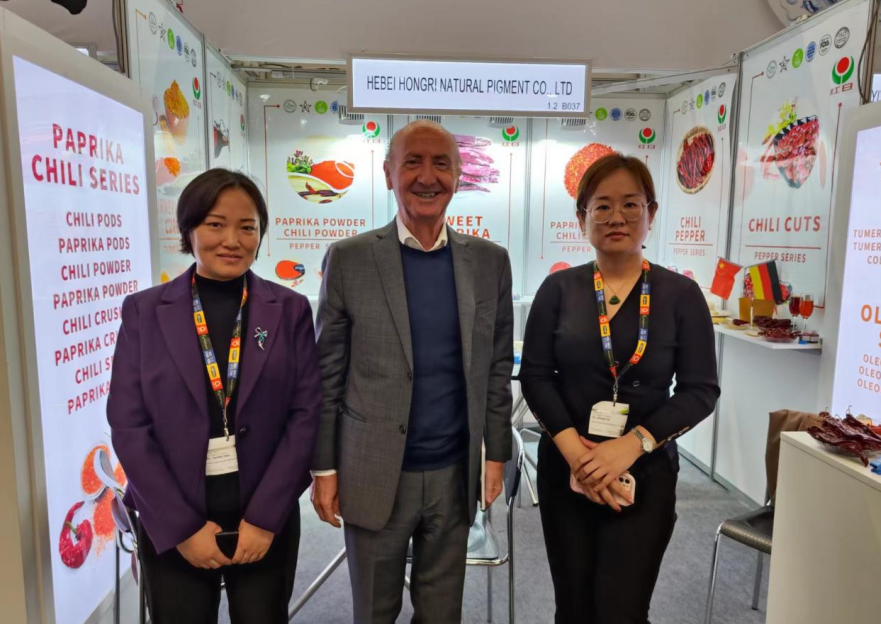- No. 268 Xianghe Street, Economic Development Zone of Xingtai city, Hebei 054001 China
- Byron@hbhongri.cn
paprika oleoresin price
The Market Dynamics of Paprika Oleoresin Price
Paprika oleoresin, a natural extract derived from the Capsicum annuum plant, has gained prominence in various industries for its vibrant color, flavor, and potential health benefits. With its increasing application in food, cosmetics, and pharmaceuticals, understanding the factors influencing the price of paprika oleoresin is essential for stakeholders across these sectors.
Overview of Paprika Oleoresin
Paprika oleoresin is primarily known for imparting a rich red hue and a characteristic flavor to food products, such as sauces, soups, and snack foods. It is also used in cosmetic formulations for its color and antioxidant properties. This versatile ingredient has become a staple in the spice industry, where it is often favored over synthetic colorants due to growing consumer awareness regarding food safety and natural products.
Key Factors Influencing Prices
1. Raw Material Availability The price of paprika oleoresin is closely tied to the availability and quality of paprika peppers. Weather conditions, such as droughts and floods, can significantly impact the yield of pepper crops. Furthermore, geopolitical issues in major producing regions like Spain, Hungary, and China can lead to supply chain disruptions, driving prices up.
paprika oleoresin price

2. Production Costs The extraction process of paprika oleoresin involves advanced techniques such as solvent extraction, which can be costly. Fluctuations in energy prices and labor costs directly affect the overall production costs, thereby influencing market prices. Companies are often faced with the challenge of balancing quality and cost, leading to price variability.
3. Import and Export Regulations Trade policies and regulations can affect the international market for paprika oleoresin. Tariffs, quotas, and quality standards imposed by different countries create additional layers of complexity in pricing. For instance, stricter regulations on food additives in developed nations may limit the supply of imported paprika oleoresin, leading to increased prices domestically.
4. Demand Trends The demand for natural food colorants, including paprika oleoresin, has skyrocketed owing to the clean-label movement, which emphasizes transparency in food ingredients. As more manufacturers seek to replace artificial additives with natural alternatives, the demand for high-quality paprika oleoresin is expected to rise, potentially driving prices higher.
5. Market Competition The competitive landscape of the paprika oleoresin market can also affect pricing. Major players are continuously innovating and expanding their product lines to capture market share, which can lead to price wars or collaborations that stabilize prices. Additionally, emerging players in developing countries can introduce lower-priced products, influencing the overall market.
Conclusion
As the paprika oleoresin market continues to evolve, the interplay between supply and demand, production costs, regulatory environments, and consumer preferences will undoubtedly shape its pricing dynamics. Businesses involved in the production and distribution of paprika oleoresin should adopt a proactive approach in monitoring these factors to navigate price fluctuations effectively. Understanding these elements not only helps in strategic planning but also ensures that stakeholders are well-equipped to meet the growing demands of environmentally conscious consumers who prioritize natural ingredients in their food and products. In summary, the pricing of paprika oleoresin remains a multifaceted issue that calls for careful analysis and foresight in today's competitive market landscape.
-
The Versatile Uses and Benefits of Capsicum Frutescens Oleoresin and ExtractsNewsJun.03,2025
-
Paprika&Chili Products Enhancing Flavor and Wellness in Every BiteNewsJun.03,2025
-
Paprika Extract and Capsicum Applications in Food and IndustryNewsJun.03,2025
-
Exploring the Benefits and Uses of Turmeric Powder and Curcumin ExtractNewsJun.03,2025
-
Discover the Bold Flavor of Premium Chilli Powder from ChinaNewsJun.03,2025
-
Capsicum Oleoresin Extract: A Potent Natural Ingredient in Modern ApplicationsNewsJun.03,2025







